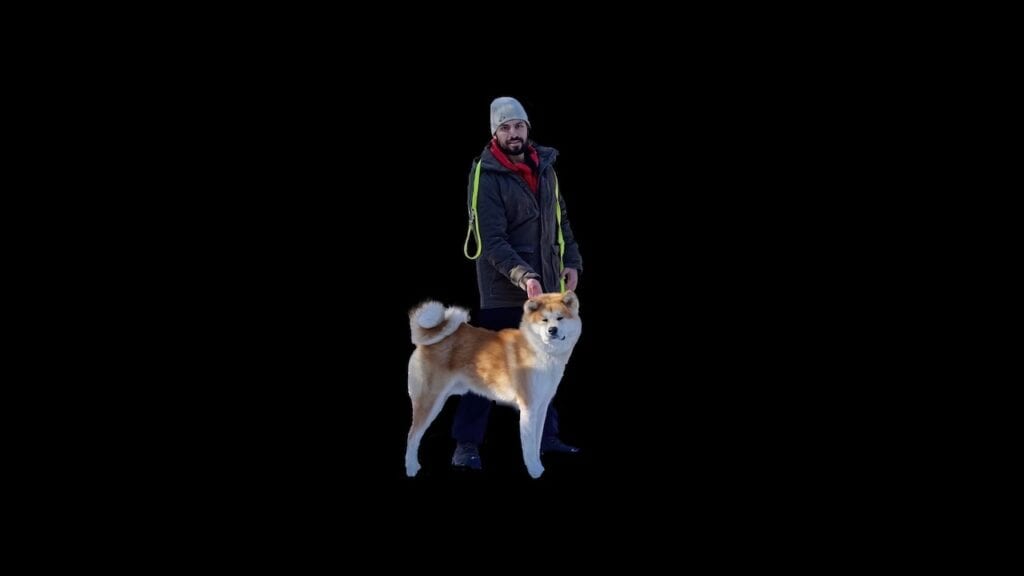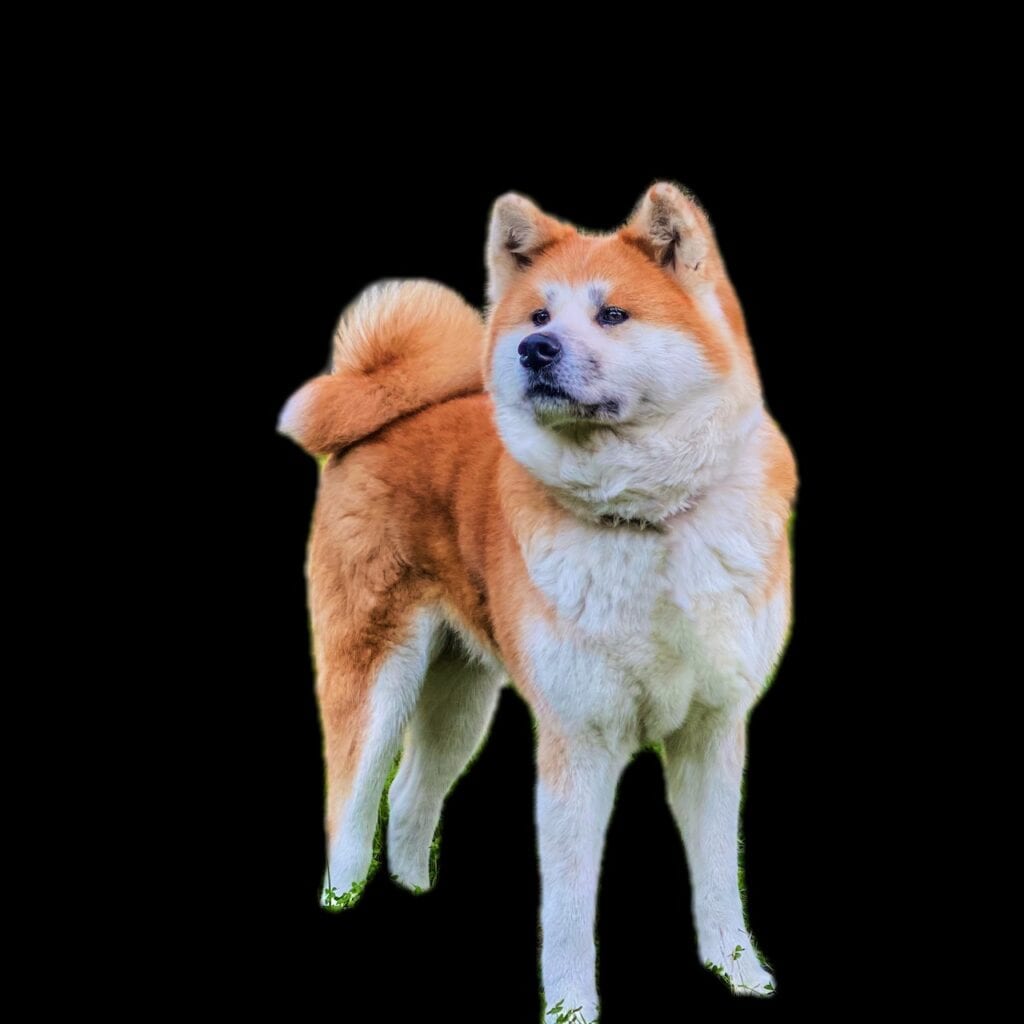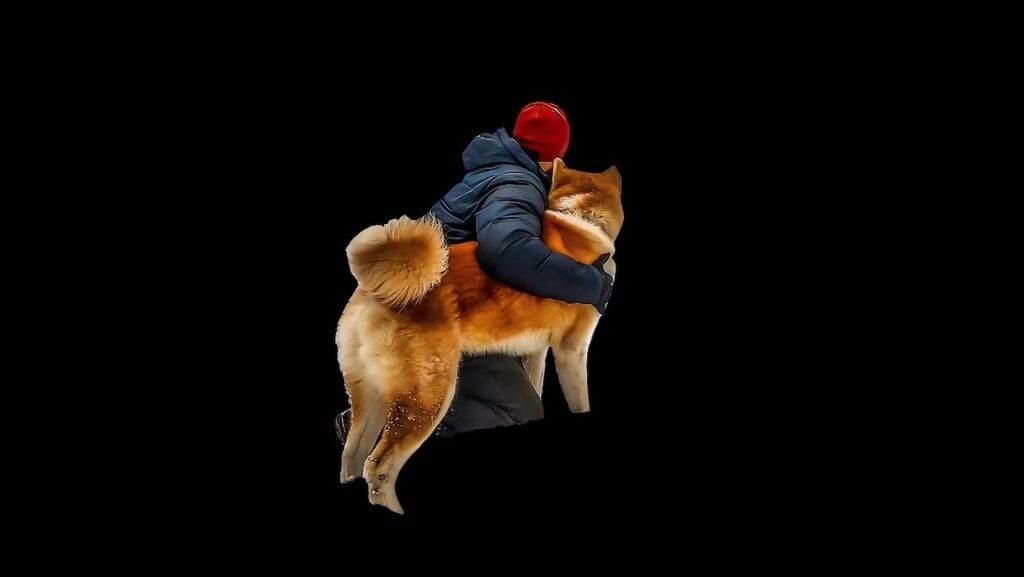The Akita Inu — Overview Of The Breed
The Akita Inu is the tamed wolf spirit of Japan. It became famous in the early 20th century, finding its way into hearts and homes of dog owners worldwide.
The iconic Akita dog is first recognized by its curled-up tail, pointed ears and fluffy fur. It has an imposing size but also a noble, calm demeanor that can still quickly turn sour if it’s agitated. It’s one of the most impressive dog breeds, carrying in itself the spirit of ancient Japan.
The Akita Inu - 秋田犬 Tweet

The iconic Akita dog is first recognized by its curled-up tail, pointed ears and fluffy fur. It has an imposing size but also a noble, calm demeanor that can still quickly turn sour if it’s agitated. It’s one of the most impressive dog breeds, carrying in itself the spirit of ancient Japan.
Besides being smart and noble, the Akita Inu is also a strong dog, well equipped to handle dangers. In fact, every part of the Akita Inu is impressive in its own right. It can and typically does grow up to be a strong, dominant dog, which can shock an owner that expected a docile, mellow dog.
There are distinct subtypes of Akita and one of them, Moku, has a long coat. So, what exactly makes the ideal Akita and how do you know if you’ve got a purebred Akita?
In Japan, Akita dog breeders define the ideal Akita Inu as:
Many define the Akita Inu as a hunting dog and that the ideal specimen should act dignified. This article will take a more holistic approach based on the history, appearance, movement, purpose, and temperament of the breed stemming from the existing breeding experience.
The worldwide FCI AKITA Standard #255 was defined as guide to the physical characteristics and behavior of the Akita breed. The same standard is used by judges during dog shows to identify the most presentable Akita dog, both male and female. These Akitas are popular in breeding as they are as close as possible to the ideal Akita regarding physical appearance, temperament but also health.
Aimi and Bakudai ancestors, for example, are fine specimens produced by correct and high-quality breeding by reputable breeders. The Akita Inu is most often a heavy-boned dog with only four color variations, but there is still a special charm in having an Akita Inu that falls outside those ideals. The Akita Inu Pedigree database is a valuable source of this information for every registered Akita and his breeder. According to the FCI AKITA Standard #255, the perfect Akita dogger looks thus:

Skull is proportional to the body, with a broad forehead and a distinct furrow. There are no wrinkles and the cranial region stop, the area between the eyes, is defined.
Muzzle tapers but isn’t pointed and the nose is always black, though a slight lack of pigment is acceptable. If the Akita has a large head, only a wide muzzle is deemed acceptable by breeders and show judges. The ideal Akita’s lips are black and tight, without any drooling. Lips may be so tight that the Akita smacks when opening its mouth. Teeth are strong with a scissor bite with lower incisors sitting behind the upper ones, but they don’t clash.
Eyes should be as dark as possible and nearly triangular due to the outer eye corner rising. Ears are also triangular but rounded at tips. They should be small, upright and inclined forward.
The ideal head invokes a sense of impeccable balance and great power. Also, the head, the ears and the eyes are meant to be symmetrical and triangular.

Muscular and thick neck, which is balanced with the head and with no dewlap. Back is strong and straight, the loin muscular and broad, and the ribs well sprung. Chest must be well developed and deep while the belly is well drawn up. Tail is vigorously coiled up over the back, reaching hocks when straightened. Height at shoulder top is 61 centimeters for females and 67 for males, with a tolerance of ± 3. Weight at preferred size is approximately 65-75 pounds for males, 55-65 pounds for females.
Elbows are tight, shoulders developed and moderately sloping, with straight and heavy forearms. Fore and hind feet are also tight, with round and arched qualities. Hind legs should have some angulation. Feet are arched, tight, round and thick, giving the Akita a powerful and resilient gait. Males should have two testicles that have fully lowered into the scrotum; both should appear normal at a glance.
Hair undercoat is dense and soft, with outer coat straight and harsh. Withers and rump have a bit longer hair than elsewhere, but tail hair must be the longest on the body.
Other than that, there is no length requirement, except to disqualify overly long hair that obstructs the dog. Red fawn hair color is preferable, but these are within the standard too:
as long as they have “urajiro”, which is a whitish coat found on:
There are small faults, that normally don’t disqualify a dog except if they jeopardize the dog’s wellbeing and there are also faults that disqualify a dog on the spot.
Lack of teeth and a faulty bite are the two most noticeable Akita faults. Dogs that act like the opposite gender are frowned upon too, meaning males acting as females and vice versa. Black or blue spots on the tongue, as well as a short tail, shyness or lack of character also disqualify the Akita in question. If the iris is of a light color, the Akita is also faulted, since that is the number one symptom of synechiae, a catch-all term for degenerative eye disease.
Hanging tail, black mask and shaggy appearance (too long hair) are some of the disqualifying Akita faults. Ears that are not pricked as well as too shy or too aggressive demeanor also instantly disqualify an Akita from a competition. The white ground on the Akita’s fur should not have any markings or that too is grounds for disqualification.
Finally, any other clear anatomical or behavioral anomalies are grounds for disqualification. Japanese Akitas being disqualified most often means they are excluded from breeding and competition.
People have gone to great lengths to define a worldwide Akita doggy standard. They did it for two purposes:
Still, there was resistance from the American Akita breeders, who created their own standard and use it in AKC (American Kennel Club) Akita competitions. Defined on December 12, 1972, the AKC Akita breed standard gave Akita breeders and exhibitors much to chew on as they discussed acceptable faults and tolerances.
It also created a split in the breed that resulted in two different standards, one for the Japanese Akita and one for the American Akita in both FCI (the world canine organization) and AKC (the American Kennel Club).
FCI defines the Japanese Akita under FCI standard N° 255 as the Akita, and the American Akita under FCI Standard N° 344 as the American Akita, whereas AKC refers to the American Akita as the Akita and to the Japanese Akita as the Japanese Akita Inu. Experts have their own opinion on the matter, of course.
According to Dr. Sophia Kaluzniack, breeder of American Akitas for three decades, the two should be kept apart. The same genetic diseases are found in both breeds, confirming they are the same stock that merely went separate directions.
She cites Akita breeders, who shun the influence of “foreign blood”, as confirmation that it’s for the best to treat them as two separate dog breeds. In other words, hybridizing the breeds don’t gain any benefit from mixing. In her opinion, it takes responsible and judicious breeding to keep Akitas free of health issues.
Some show judges and breeders allow for a “liver-colored nose”. In common parlance, a Doberman’s or Viszla’s nose would be described as “liver colored” if it’s plainly red but that color is rarely seen in Akitas.
White Akitas can sometimes have fully black noses but most of them have a pinkish color that eludes definition. For some, that color is called “pink”, for others it’s “flesh-tint” and others yet it’s “diluted black that shades into pink in the center”. Akitas have been disqualified for having a “butterfly” nose or a “total lack of pigmentation”.
These butterfly-colored noses refer to noses Akita puppies normally have, which are filled in after 3–4 months of age. In some instances, the pigment doesn’t fill in fully, leading to much chagrin from their owners. A completely flesh-colored nose is acceptable only in white Akitas.
The crucial distinction is the allowed length of hair in Akitas. Slightly longer hair on the rump and withers is acceptable but there is no precise wording on how long it must be.
The long coat in the Akita is a point of contention for breeders and show judges. Many breeders think that it is a fault, whereas others believe that long coats should be accepted. Some suggest to create a separate category solely for the long coat Akitas. Long-coated Akitas are commonly excluded from showing and breeding since it is considered a disqualification reason under the FCI Standard #255.
Any Akita can have a long coat, though this depends on the parent stock. If both parents have the long-coat gene, their pups have a 25% chance of having long coats themselves and a 50% chance of being the carriers. Despite breeders avoiding the long-coat gene, it can still pop up once in a while.
An Akita is defined as an aggressive breed, but breeders discourage this behavior. They are trying to preserve domination towards other dogs but are afraid of legal liability that could come their way due to lax owners. For now, only keep in mind that Akitas are dominant, stubborn dogs that can live up to 12 years and produce 3–12 puppies per litter.

You can refer to the details above to figure out if your Akita is purebred and how close to the ideal it is. Still, you probably won’t have the chance to measure the withers or watch the dog’s gait.
When looking at a purebred Akita, you need to make sure the pedigree is flawless. This means both parents must trace their lineage to genuine Akitas three generations deep. In the US, there are four legitimate registrars of purebred Akitas:
Another useful registrar is the Akita Pedigree, which contains the pedigrees of more than 30,000 Akita Inus around the world. Parents registered in these lists will always be purebred Akita Inus, so as long as all eight grandparents of a puppy belong to any of the four, it’s a purebred.
You can also scour the advertisement and look for words that indicate American heritage, such as “AKC-certified”. Get in touch with the breeder and ask about their opinion on the Akita breed split. This will most often be the tell-tale sign indicating if the breeder would call an American Akita and vice versa but isn’t foolproof. Some American breeders will have an interesting opinion on the breed split but still produce purebred Akita Inu, with a genuine certificate and lineage. Also ask the breeder if the puppy has been registered with any of the above four listings and if it can be registered there at all.
If the breeder avoids the breed split or the pedigree question, the puppy is most likely not a purebred Akita Inu. If the breeder says the puppy can’t be registered, then it’s certainly not a purebred. Ask for a copy of the puppy’s pedigree as well, though breeders are hesitant to send these out because of misuse. You can ask for the puppy’s parents’ names and look them up in the registries of the four listings mentioned above.
Generally, a breeder that takes part in the dog shows of his country will have purebred Akitas. A call to your country Kennel Club asking which are the Akita Inu breeders can save a lot of time.
The Akita Inu is the tamed wolf spirit of Japan. It became famous in the early 20th century, finding its way into hearts and homes of dog owners worldwide.
Akita Inu has a checkered history filled with drama and struggle. Only in the latter half of the 20th century the breed got the recognition it deserves.
The iconic Akita dog is first recognized by its curled-up tail, pointed ears and fluffy fur. It has an imposing size but also a noble, calm demeanor that can still quickly turn sour if it’s agitated. It’s one of the most impressive dog breeds, carrying in itself the spirit of ancient Japan.
Akitas are a challenge to train and mold into the perfect family-loving dog. Here’s what you can expect if you take up the challenge.
Training an Akita is a learning experience for its owner and the dog itself. It starts off with housebreaking and continues with fun daily exercises.
Hormones regulate every body function, from growth to reproduction. This article describes some common Akita hormone issues, including diabetes and Addison’s disease.
Akitas are low-maintenance dogs when it comes to grooming but are fussy about how you do it. Here are some actionable tips on how to make Akita grooming as easy as pie.
Akita’s immune system is a protective mantle against the environment. Understanding how it works helps you keep it working fine, even in Akita’s old age.
Akita’s immune system is a protective mantle against the environment. Understanding how it works helps you keep it working fine, even in Akita’s old age.
Akita’s immune system is a protective mantle against the environment. Understanding how it works helps you keep it working fine, even in Akita’s old age.
Akita eye problems always happen because of a nutritional deficiency and a congenital defect. Diet fortified with nutrients and early eye exams are the simplest way to detect and manage eye problems in Akita
Akitas might not like to mingle but they can still catch communicable diseases just like any dog breed that does. These diseases quickly spread through a litter, especially an unvaccinated one, even without physical contact; all it takes is an infected bowl, toy, or blanket to spread the disease.
A limping Akita is a sad sight to behold. It seems to need help but suddenly the limp disappears and the Akita acts fine. This is a warning sign that trouble is afoot and the Akita is about to develop an issue with its joints, spine or both. Here is an overview of joint and spine problems in Akita, with probable causes and suggested remedies.
Training an Akita is a learning experience for its owner and the dog itself. It starts off with housebreaking and continues with fun daily exercises.
Spirits are all around us and some of them take unusual forms. One of them is – Akita. We feel affection washing over us, turn around and see its friendly smiling face and a wagging tail.
All the best adventures start with a simple walk and end up in exhilaration. Join me on Akita’s forest walk to see how a natural hunter stays fit in the wild.
Climbing to the top requires the sheer power of will to push against inertia. Those that do succeed can marvel in a breathtaking view of how far they’ve gone.
Tame senses become awakened when entering an ancient winter forest. The primal yearning to experience the environment becomes manifest in a snow-clad forest.
All the best adventures start with a simple walk and end up in exhilaration. Join me on Akita’s forest walk to see how a natural hunter stays fit in the wild.
Get notified about new articles